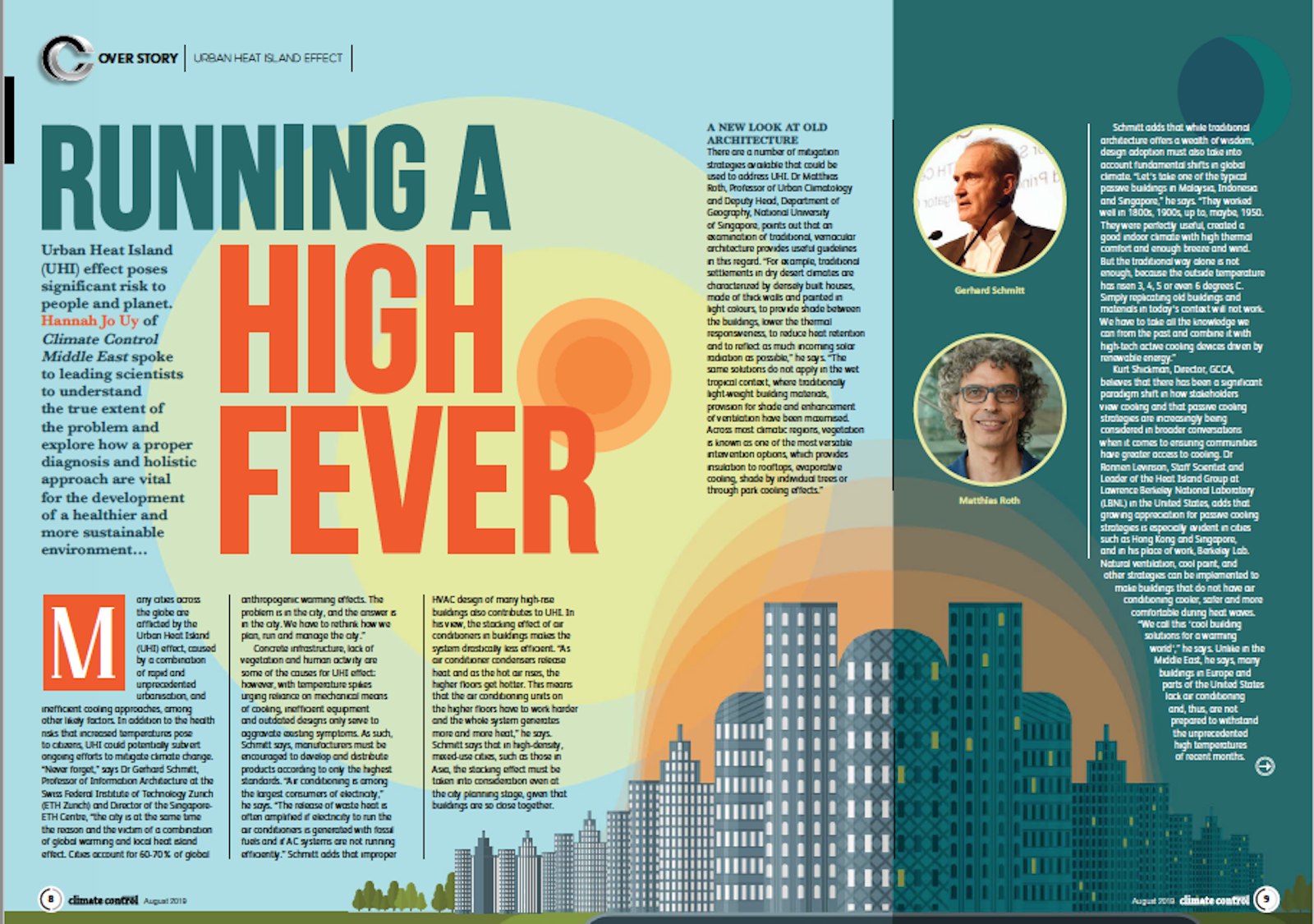Running a high fever
Prof Gerhard Schmitt shares his thoughts on the roles of stakeholders in mitigating the UHI effect in this Climate Control Journal article.

Prof Gerhard Schmitt, director of the Singapore-ETH Centre and principal investigator of the Cooling Singapore project was feature in the article external page Running a high fever in the Climate Control Journal. In this article about the urban heat island (UHI) effect, Prof Schmitt shares his thoughts on what the different stakeholders can do to mitigate the UHI effect.
Many cities across the globe are afflicted by the Urban Heat Island (UHI) effect, caused by a combination of rapid and unprecedented urbanisation, and inefficient cooling approaches, among other likely factors. In addition to the health risks that increased temperatures pose to citizens, UHI effect could potentially subvert ongoing efforts to mitigate climate change.
In the article, Prof Schmitt says that the problem is in the city, and the answer is in the city. The way the city is planned, ran and managed has to be rethought. However, there can never be a one-size-fits-all approach and solutions must be tailored to address unique challenges of cities. The level of understanding policymakers have towards the issue varies between developed and developing countries.
Air-conditioning is among the largest consumers of electricity. To Prof Schmitt, the stacking effect of air conditioners in buildings makes the system drastically less efficient. He says that in high-density, mixed-use cities, such as those in Asia, the stacking effect must be taken into consideration even at the city planning stage, given that buildings are so close together. Manufacturers within the cooling sector might be able to reduce the cost and increase efficiency in the HVAC industry, if they move towards a more service-oriented framework, not unlike what has been done in the transportation sector.
Prof Schmitt proposes that stakeholders must take on the role of doctors and view the city as an organism, sharing insights from the Future Cities Laboratory’s approach of understanding the city through the lens of urban metabolism. “When a person has a fever, you have to identify the source of the fever,” he says. “Then, it will be simpler to make the diagnosis to help with the mitigation. But, it has to be done building by building, case by case and city by city – then it will be successful.”